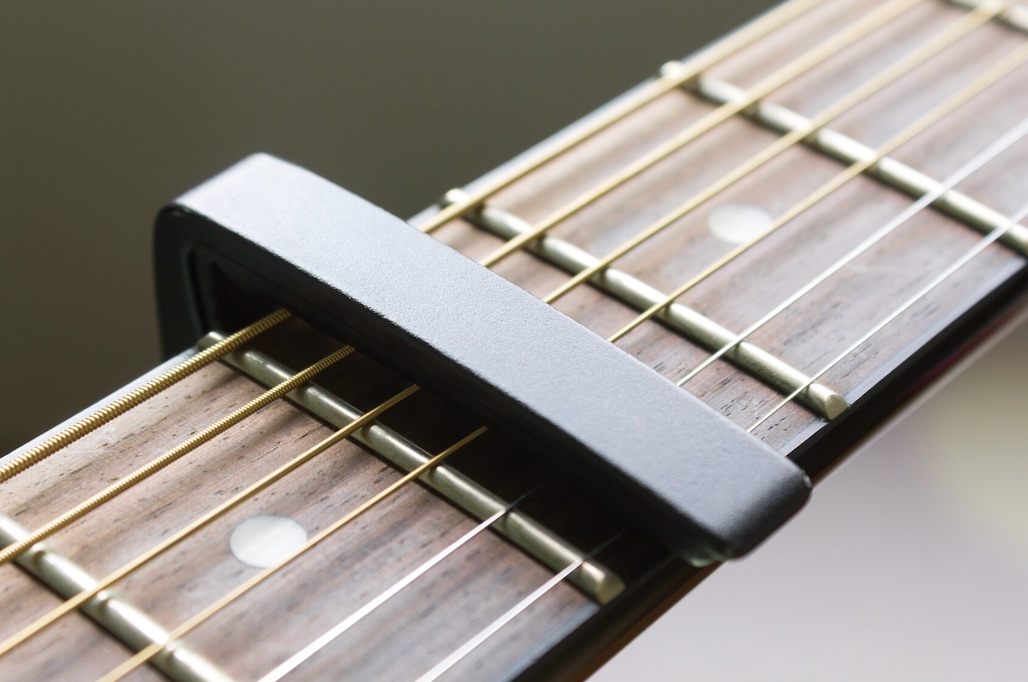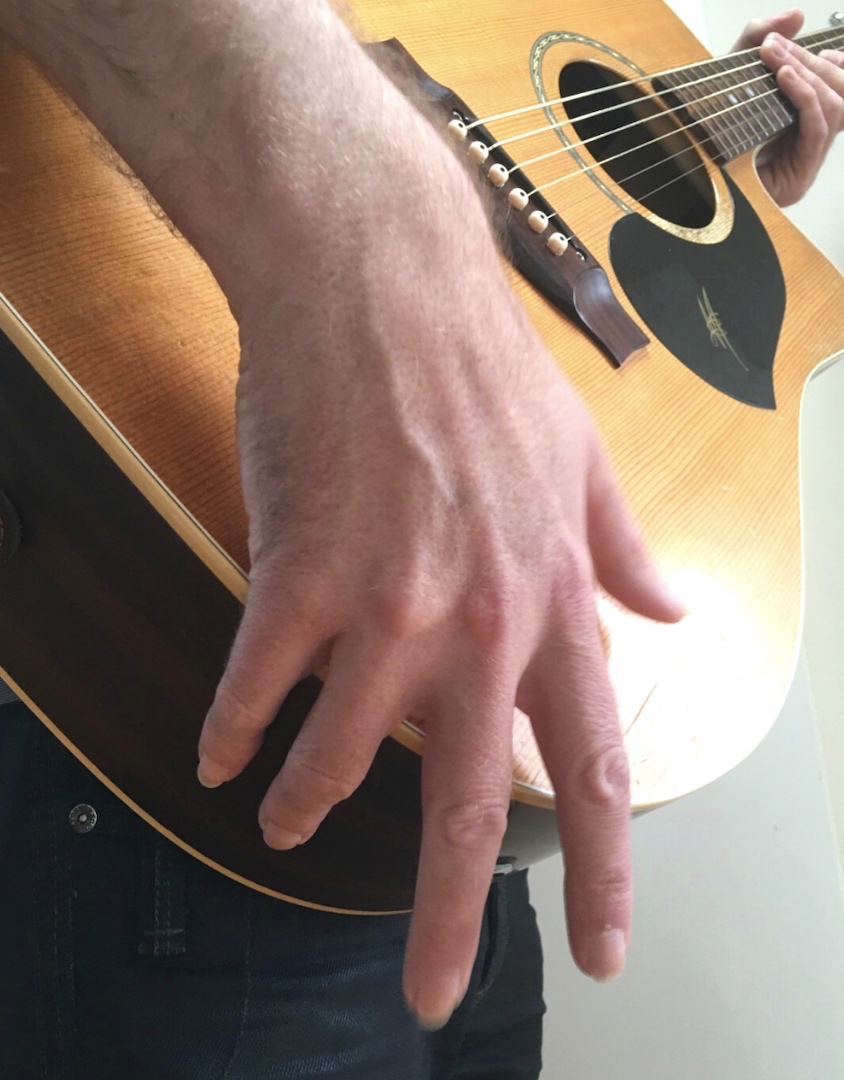How To Become A More Creative Acoustic Guitar Player - Part 2
By Simon Candy
 In part 1 of how to be more creative with your acoustic guitar playing, I ran you through two very cool techniques that you can use in your playing. In part 2 of this article, I am going to present three more ways in which you can drastically increase your creativity on the guitar.
In part 1 of how to be more creative with your acoustic guitar playing, I ran you through two very cool techniques that you can use in your playing. In part 2 of this article, I am going to present three more ways in which you can drastically increase your creativity on the guitar.
Take your time to explore each approach below. There is much to be gained in regard to your guitar playing ability and creativity by doing so.
Open String Playing
Now, I’m sure you're familiar with what an open string is, but many acoustic guitar players don't fully utilize the creative potential that they offer. Open strings are commonly found in open chords, melodies, and riffs in the open position on the guitar. However, they can be used in any position on the guitar.
Let's take the following G Major scale as an example:

Now let's take every note in the scale above that exists as an open string, and play it as an open string while leaving the remaining notes fretted.
The result is this:

What a great sound and difference the open strings make when played against the fretted notes. Your guitar creativity will go through the roof when exploring this approach.
How To Start Creating With Open Strings On Your Acoustic Guitar Right Now
• Take an existing melody in G that you know and replace all the relevant notes with open strings. The sound of these against the fretted notes on your guitar will sound really cool.
• Try the same approach with the keys of C, A, E, and D. These work best because they contain a number of open string notes in them.
• Once you have worked out your open string scale (ie. C, A, E or D) start creating melodies with them on your guitar. Use existing melodies you know and transpose them to your key if need be.
Watch the video below for a very cool and unique way to use open strings with pentatonic scales.
This approach will have you playing open string riffs and runs all over the fretboard:
Using A Capo
 Using a capo can greatly enhance your creativity when playing acoustic guitar. It is a useful tool that allows you to switch keys instantly while still using open chords and open strings. Imagine a capo as a movable nut or your index finger when playing barred chords - it serves the same purpose.
Using a capo can greatly enhance your creativity when playing acoustic guitar. It is a useful tool that allows you to switch keys instantly while still using open chords and open strings. Imagine a capo as a movable nut or your index finger when playing barred chords - it serves the same purpose.
Just place it on a fret of your guitar and clamp it down. For example, to play a Bb chord on your guitar without a capo you would need to bar it. However, if you capo your guitar at the first fret you will be able to use an A open chord to get the same sound.
Why?
Because placing your capo at the first fret of your guitar raises everything by one semitone. So an A chord, when played with your capo at this fret, sounds a semitone higher as a Bb chord.
How To Start Creating With A Capo On Your Acoustic Guitar Right Now
• Take a chord progression or song on your acoustic guitar that is in a key that has few open chords in it and capo at a position that allows you to use more open chords.
For F Major try placing your capo at either of the following fret positions: 1st, 3rd, 5th, and 8th
For Bb Major try placing your capo at either of the following fret positions: 1st, 3rd, 6th, and 8th
• Take the riffs and melodies that you come up with using the open string approach from earlier and use your capo to make them possible to do in any key.
• Try taking a chord progression that already includes open chords and using a capo to play it in a different position. This will give you a new set of open chords to work with even though you are playing the same progression in the same key. The result will sound different due to the capo and the use of different open shapes.
Checkout the video below for more ways to use a capo to enhance your creativity on the guitar:
Percussive Guitar Playing
 Have you ever considered playing your acoustic guitar as a percussive instrument? Though the guitar is known for its melodic capabilities, using it percussively has become increasingly popular. After all, it is made of wood, so why not explore this unique technique?
Have you ever considered playing your acoustic guitar as a percussive instrument? Though the guitar is known for its melodic capabilities, using it percussively has become increasingly popular. After all, it is made of wood, so why not explore this unique technique?
Playing your guitar in this way can change your perspective on how you approach and play it. The possibilities for creativity are endless. Don’t worry if you're not a creative genius, virtuoso, or prodigy. With some fundamental skills, you can produce great sounds and decide how far you want to take your percussive guitar playing.
Here is something to get you started:

* The Percussive hits are indicated below the tab in the drum notation. This is often used when notating stuff for percussive guitar.
In the progression above I am sounding the thumb hit (B.T.) with the side of my thumb on the lower area of the soundboard of the guitar just below the bridge. Think of this as a kick drum sound. Be sure to flick your wrist as you hit the body of the guitar with your thumb.
The snare sound (S) is achieved by tapping or rapping the side of your guitar just below the strap lock. I like to use my 3rd and 4th fingers for this but you can try any combination to see what works best for you. Be patient with this, we are trying to create a higher pitched sound and it can take some time to be able to get this consistently.
How To Start Creating With Percussive Guitar Techniques On Your Acoustic Guitar Right Now
• Really spend time honing both the kick drum and snare sound from the example above. These alone, without any chords, sound really cool and you can create a lot on your guitar with them.
• Listen to the drum beats of your favourite songs and emulate them on the body of your acoustic guitar using the snare and kick drum sounds.
• Take existing chord progressions that you know on your acoustic guitar and integrate a simple beat using your kick drum and snare sounds.
Checkout the video below for more details and breakdowns of basic percussive guitar techniques.
In this lesson, I take you through all the essentials of percussive guitar playing to get you up on going as well as how to integrate it with what you can already do on the guitar:
The Key Is To Start Creating On Your Guitar Now
It's important not to feel overwhelmed by the options presented in this article. Rather, take note of them and focus on exploring one at a time. If you end up trying something new with your acoustic guitar playing as a result of reading this article, you're on the right path.
Discover 5 unique and creative ways to play the same chord progression on guitar